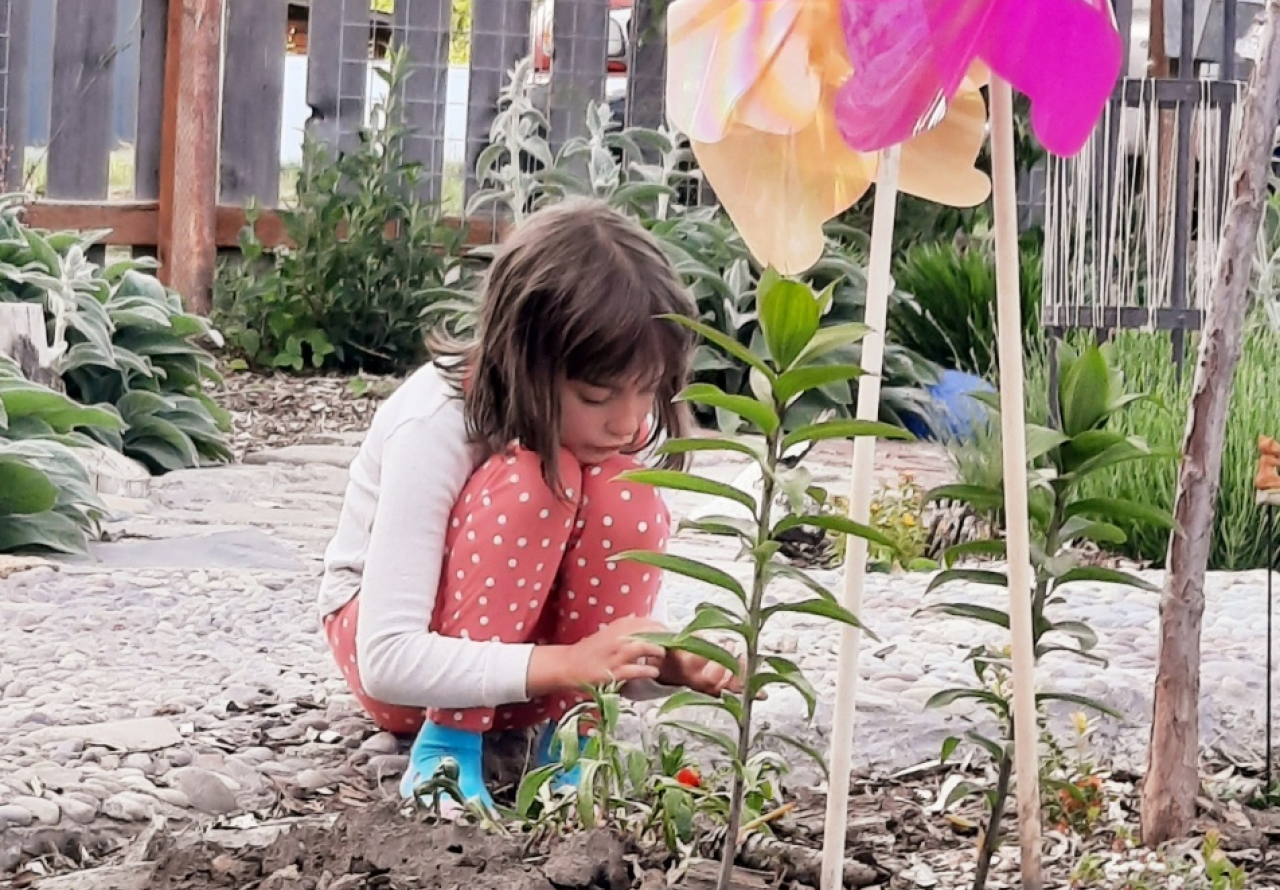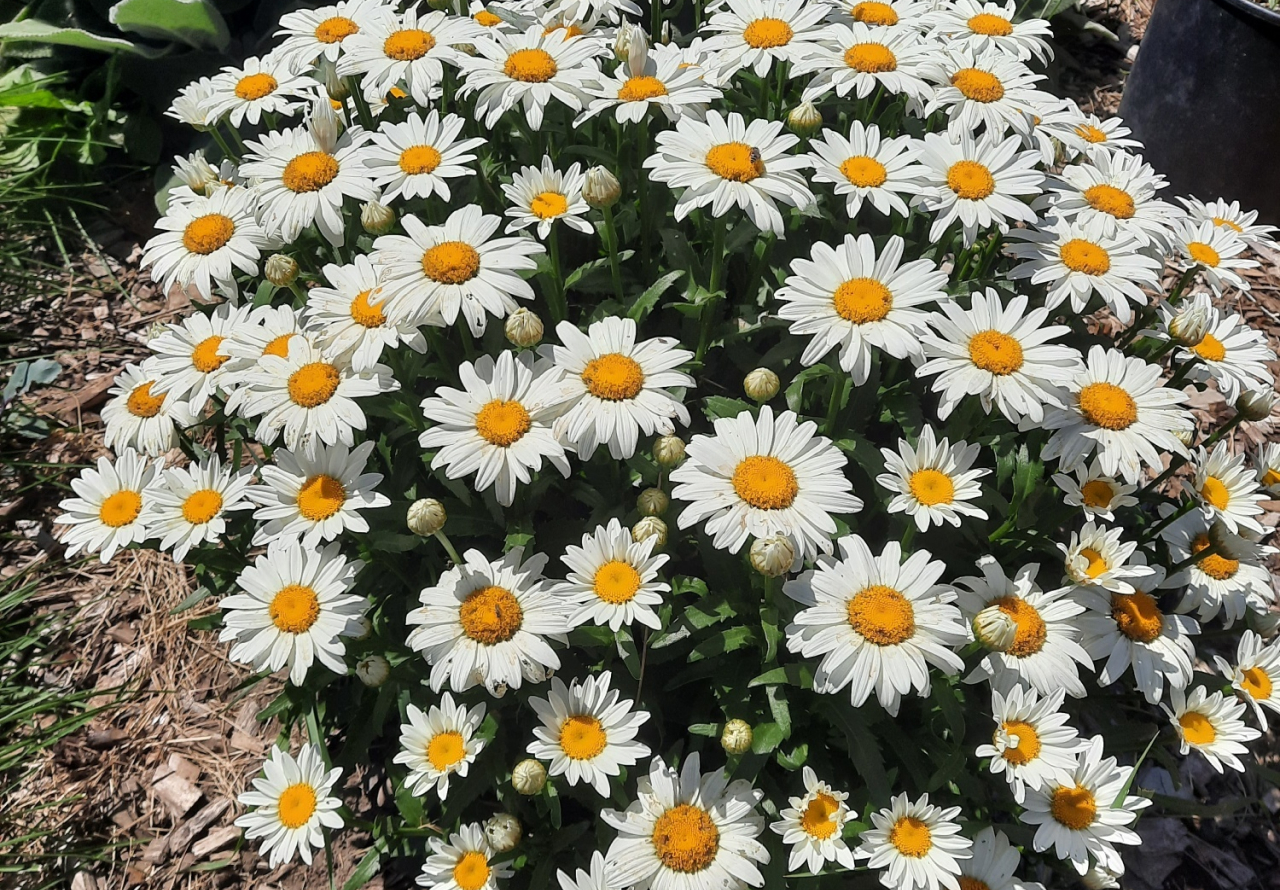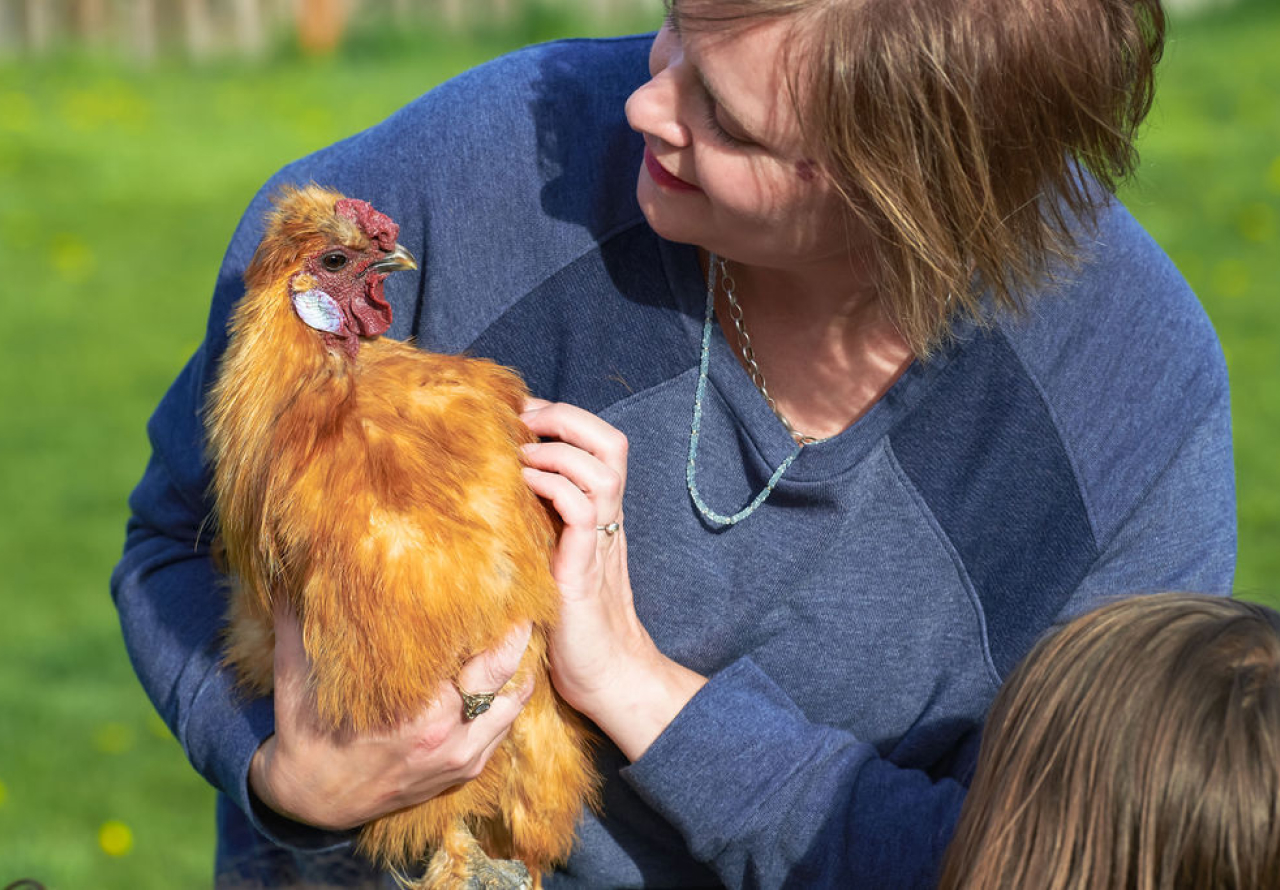
In his amazing book “The Universal Sense: How Hearing Shapes the Mind”, author and neuroscientist Seth Horowitz says our auditory sense is 20x – 100x faster than any of our other senses.
That means everything else we experience is influenced by what we hear.
Additionally, sound is very much tied to our emotions. What does all this have to do with nature play??
Well, for kids, this means their play and learning experiences are informed first by the sounds they hear, whether or not they see the source of the sound. The emotions the sound evokes give them an indication of good or not so good, exciting or dull, safe or unsafe, and so on.
Sounds that are soothing, joyful, interesting, and otherwise positive help regulate our nervous system and bring us into sensory balance where we can play, learn, interact, create, and do all the marvelous things that happy humans do.
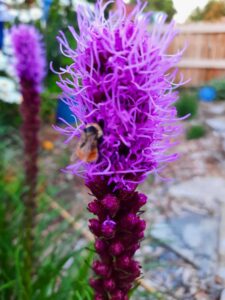
The buzzing of a honeybee can signal many feelings, including excitement or nervousness.
Sounds that are loud, jolting, irritating, raucous, and otherwise uncomfortable will send our nervous systems into 'flight or fight’. When our system is imbalanced, we are in survival mode and are only able to what’s absolutely essential to get through the situation.
For example, a child playing in a playground hears mom’s voice nearby which gives them the feeling that it’s ‘safe’ to play here. Even though mom isn’t in their field of vision, the child knows she’s there for them. Mom’s voice may evoke in them the feelings of calm, joy, love, and well-being. Feeling safe and happy, this kiddo can have positive play experiences, social interaction, and higher creativity.
For outdoor sensory play, I like to think of sound in 3 main types: nature sounds, social sounds, and musical sounds.
Nature sounds are birdsong, the breeze rustling the leaves of an aspen tree, toes wriggling in gritty sand, and water splashing. Studies show that nature sounds help calm our nervous system.
Social sounds, as you can guess, revolve around our personal interactions, like playing, talking, whispering, singing, laughing, crying, and shouting. Sometimes social sounds are positive, nurturing experiences, and sometimes they’re not.
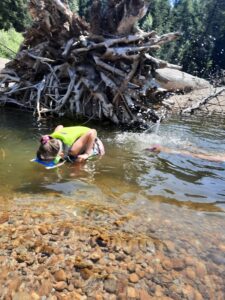
Splashing in the water at our favorite river spot.
And, of course, music is rich food for children’s developing bodies and brains.
Music has a lot going on: rhythm, harmony, vibration, singing, emotion. For children, listening to a song (which, for kids, also means moving and dancing) is a powerful sensory integration experience, and it also builds neural pathways in the brain, enhancing their cognitive ability.
Within each of these three types is vibration, or the feeling of sound. Each sound has a different sound wave, which we can feel through our skin/tactile sensory system. The vibrational feeling of a bass drum thumping compared to the vibration of a xylophone is very different, whether you’re putting your hands directly on the instruments or letting the sound waves hit your skin.
With sound also comes the need for quiet. A cozy space is an essential feature of any play area. I’ve talked about cozy spaces in earlier posts, but these are child-sized structures that give a child some personal space, often to self-regulate. A forts, a tipi, a nook carved out in the vegetation are examples.
What if you and your kiddo closed your eyes outside in their play area. What do you each hear? Does what you hear change with the seasons? How so? These are all great conversation to have with your little one. Encourage them to expand their vocabulary here.
How can you think of your child’s play space as a soundscape?
Children are always experimenting with sound. The natural world is a rich soundscape, where plant life takes center stage.
When you provide plants for sound experiences, you open up a new dimension of environmental learning for your kiddos to learn about the world around them and their interactions with it.
Seed pods rattle when shaken.
Tree leaves rustle in the breeze.
Ornamental grasses make inviting scratchy, swishy, swooshy sounds when kids brush by or the wind whistles through.
Here are a few plants that contribute to the symphony of a sound garden:
All Gold Japanese Forest Grass (Hakonechloa macra ‘All Gold’), hardiness zones 4-9
There are many options for kid-friendly ornamental grasses, but Japanese Forest Grass is one of my favorites. The primary reason being their leaf blades are smooth to the touch and very inviting. Whether kids brush it with their leg as they walk by or run their hands through it like their tousling someone’s hair, this happy little grass responds in pleasant swooshes. The All Gold variety has gorgeous golden yellow color to add some visual appeal and multi-sensory value.
18” tall and wide
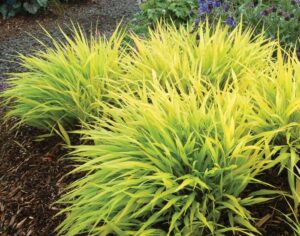
All Gold Japanese Forest loves to be rustled by little hands.
Silver Dollar Plant (Lunaria biennis), hardiness zones 5-9
This plant gets its name from the seedpod that form after it blooms in the spring. The roundish, flat pods start out green and turn an iridescent white over time the plant dries out. Each dried stalk has a mass of dried silver dollars on it and give a papery rattle sound when shaken. Considered a hardy annual in the northwest climate, they can spread enthusiastically by seed.
Approx. 30” tall x 18” wide
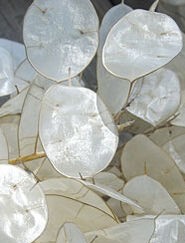
The seed pods of the Silver Dollar Plant have a raspy-papery-rattly sound.
Karl Foerster Feather Grass (Calamagrostis acutiflora ‘Karl Foerster’), hardiness zones 5-11
Feather reed grass is a favorite, and for good reason. These grasses can take a beating, I mean ‘loving’, from kiddos at play and shake it off like nuthin’ happened. I’ve planted this grass in a maze-like pattern in several playscapes. As kids wind their way through these grasses give off a happy rustling sound. Leave the seed heads on over the winter for four-season play opportunities.
4’-6’ tall and 2’-3’ wide
Quaking aspen, (Populus tremuloides), hardiness zones 2-6
Quaking aspen are magical trees. In cooler climates, they naturally grow in a variety of conditions. In the fall, their leaves turn a brilliant yellow like a ray of sunshine in the forest. This tree is named for the sound its leaves make in the wind. They quake, they tremble, they clack together and make the wind visible. Aspen spread by underground rhizomes, so if you have one aspen, you’re about to have more. If you have the room for this tree in your landscape, wonderful! If not, keep an eye (and an ear!) out for aspen groves when you go on family hikes.
50’ tall x 25’ wide
Again, be sure that all plants in the play area are non-toxic. And, always and forever, pesticides, herbicides, and other harmful chemicals should NEVER be used in play areas.
Check out my eBook, Nature Play for the 7 Senses: A Parent’s Guide for Natural PLay & Learning Spaces for ALL Children
